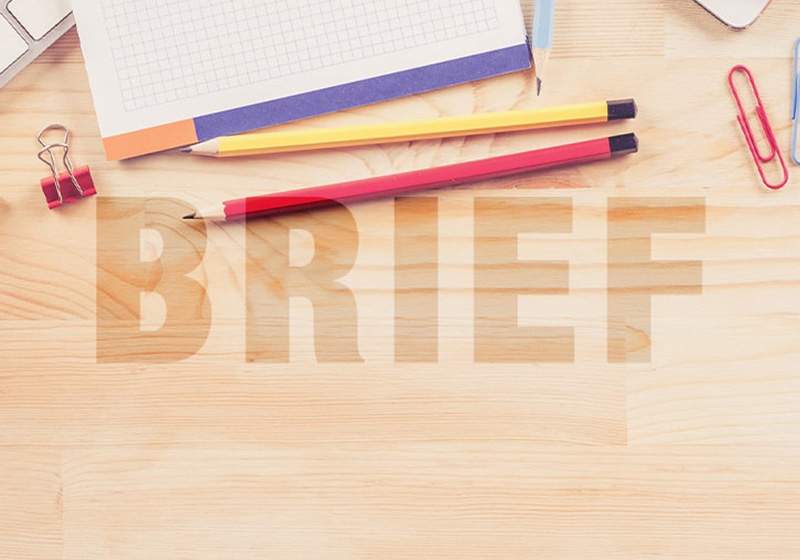Table of Contents
Where does any marketing project or creative job start? Ask any ad agency, and the answer will always be the same: with a brief.
The brief provides a bridge between the client and the creatives working on their project. It is worth spending a lot of time on, as a top-notch brief will help you work better, save time and avoid endless revisions. With this in mind, let’s explore what a brief is and how best to structure it.
What is a brief?
A brief is a summary document containing all the information you need for an in-depth understanding of your client: what they are like, the products or services they offer, and their objectives. They are used by advertising agencies and creatives to optimise their work on marketing and communication plans – an ad campaign, a brochure, a company logo or some market research, for example – and to ensure the client’s aims and wishes are respected.
What is a brief for?
The aim of a brief is to provide clear, precise and comprehensive instructions so a coherent communication plan can be developed. They tend to be put together by an account manager following an initial chat with the client: a phone call is essential to direct the questions in the brief and focus on the really important information.
The document is then sent to the client, who fills it in and returns it. At that point, brief in hand, the creatives can get to work. Since the person who drafts the document (the account manager at agencies) is often not the same person who works with it (the creatives), it is vital that the brief is meticulous and that nothing is taken for granted.

Creative briefs: tips and examples
We can’t just give you a list of questions to copy and send to the client, because there is no single template that works for every occasion: the document has to change depending on the client and the aims of the project. However, there is some generic information that appears every time, including:
- Company/brand name
- Address
- Contact details
- Brief date
- Deadline
Once you have this basic information, it’s time to get some more specific details. To do this, we recommend producing targeted questions relating to the most salient points. Here’s an example to show you what we mean. Let’s assume that the client wants you to produce a logo for their company. Where could you focus your interest to gather useful information?
BRAND NAME
What name needs to appear in the logo?
COMPANY INFORMATION
How was the brand founded? What is the company’s story? (These questions are important to grasp the brand’s identity and transfer it to the logo).
COMPETITORS
List at least 3/4 respected competitors (to examine how they communicate visually and find a way to differentiate the client’s brand image).
TARGET
What is your target audience? Describe your buyer personas.
USP
What is the brand’s Unique Selling Proposition (USP)? Why should people choose you? How does your product/service stand out from the competition?
VALUES
What values does the brand believe in that should be represented by the logo?
BRAND IDENTITY
What are the distinctive features of the brand’s personality? If it were a person, what would it be like? Give at least five adjectives.
VISUAL IDENTITY
Are there any existing guidelines for the brand’s visuals? Colour palette, fonts to use, etc.
AIMS OF THE LOGO
What is the logo for? A new brand/business? A new product line? Do you need to redesign an existing logo? If so, what does the new logo need to communicate that the old one didn’t?
INSPIRATION
List five famous logos you like and explain what appeals to you about each one.
STARTING POINTS
Do you have any ideas for your logo? If so, describe them.
EXPECTATIONS
What do you expect from your new logo?

Once the client has sent back their completed brief, it’s time for the creatives to get to work. The first stage is normally a brainstorming session, which is a great way of coming up with the creative concept. This is followed by the debriefing, which involves discussing the newly devised ideas: the client will provide their feedback on the design and may request some revisions. This is not only when you find out whether the client likes your suggestions, but also whether the brief did its job of pushing the creatives’ work in the right direction.

